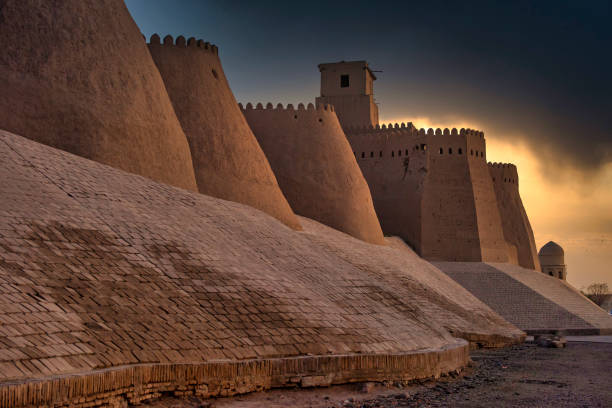sonakshisinha.net – The Silk Road, a network of trade routes that connected the East and West, was a conduit for the exchange of goods, ideas, and cultures for centuries. Among the many countries that this historic route traversed, Uzbekistan stands out for its stunningly preserved cities that once thrived as bustling centers of commerce and culture. Exploring these ancient Silk Road cities offers travelers a glimpse into a rich tapestry of history, architecture, and tradition that continues to captivate the imagination.
The Historic Significance of the Silk Road
The Silk Road was not a single road but a series of interconnected routes that facilitated trade between Asia, the Middle East, and Europe. Uzbekistan’s strategic location made it a vital hub for merchants, travelers, and explorers. Cities like Samarkand, Bukhara, and Khiva became prominent centers where caravans stopped to trade goods such as silk, spices, and precious metals. These cities also became melting pots of diverse cultures, religions, and philosophies.
Samarkand: The Jewel of the East
Architectural Marvels
Samarkand, often referred to as the Jewel of the East, is renowned for its stunning architecture and historical significance. The city’s Registan Square, adorned with majestic madrasahs, is a testament to the grandeur of the Timurid dynasty. The Shah-i-Zinda complex, with its intricate tile work, and the Gur-e-Amir Mausoleum, the final resting place of the conqueror Timur, are must-visit sites that reflect the city’s rich heritage.
Cultural Heritage
Samarkand was not only a center of trade but also a hub of intellectual and cultural exchange. The Uleg Beg Observatory, one of the finest observatories of the medieval Islamic world, highlights the city’s contribution to science and astronomy. Exploring Samarkand offers a deep dive into the cultural and intellectual history of the region.
Bukhara: The City of a Thousand Monuments
Historical Landmarks
Bukhara, with its well-preserved medieval core, is a living museum of Islamic architecture. The city’s historic center, a UNESCO World Heritage site, is home to the impressive Kalyan Minaret and Mosque, the Ark Fortress, and numerous ancient madrasahs. Each monument tells a story of Bukhara’s significance as a center of learning and religion.
Traditional Crafts
Bukhara is also famous for its traditional crafts, including carpet weaving, ceramics, and metalwork. Visiting local workshops offers an opportunity to witness artisans at work and purchase unique handmade souvenirs that reflect the city’s artistic heritage.
Khiva: The Desert Oasis
Ancient Walls and Minarets
Khiva, a city that seems frozen in time, is surrounded by imposing mud-brick walls that enclose a labyrinth of narrow streets and stunning minarets. The Itchan Kala, the inner town of Khiva, is a UNESCO World Heritage site and a masterpiece of Central Asian architecture.
Cultural Experiences
Khiva offers rich cultural experiences, from exploring its historic mosques and palaces to enjoying traditional music and dance performances. The city’s vibrant bazaars provide a taste of local flavors and handicrafts, making it a perfect destination for cultural immersion.
Conclusion
Exploring the ancient Silk Road cities of Uzbekistan is a journey through time, where the echoes of the past resonate in the architecture, art, and traditions of today. These cities, with their rich heritage and stunning landscapes, offer travelers an unforgettable experience that bridges the gap between history and the present. Whether you’re drawn to the architectural marvels of Samarkand, the historical landmarks of Bukhara, or the timeless beauty of Khiva, Uzbekistan’s Silk Road cities promise a journey of discovery and wonder.
